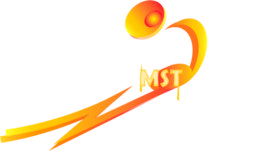I have referred to the good old inverted U curve no fewer than three times in various blog posts! Some of you might remember this picture from this post (click on the title to go back to the post if you like): Put Some “Skins” in the Game.

For the sake of completeness, you can find my other reference to the curve Here and Here. The short summary is that this theory posits that a certain amount of “arousal” (you can substitute “motivation” or “anxiety” for “arousal”) is required to achieve peak performance.
So why do I bring up the topic a 4th time? Well, I just finished reading this book today:

In Chapter 7, Dr. Brewer was discussing the fascination with the idea that anxiety is critical for success just as the above curve would seem to indicate. He delved into the history a bit. It turns out, this relationship was first proposed back in 1908! Two Harvard researchers (Robert Yerkes and John Dodson) discovered that dancing mice learned new tasks better when they were given a moderate electrical shock as a form of negative reinforcement as opposed to mild or severe shock resulting in the inverted U curve for performance. For the next 50 years, this research remained somewhat obscure only being referenced 10 times. However, four of ten references described it as a “psychological law” known as the Yerkes-Dodson Law or the Yerkes-Dodson Curve. A century later (the early 2000’s), it had been referenced over a 1000 times!
However, the recent research does not support the findings! Dr. Brewer noted that more recent research shows that the Yerkes Dodson curve was only supported by 4% of the research papers while 46% found a negative linear relationship meaning that any amount of arousal or anxiety is not a good thing! But, by this time, the curve had already achieved folklore status no matter what the data showed to the contrary.
I started thinking about my own experiences. Thinking back to times when I had performed my best, my recollection was that I was surely not feeling anxious or aroused – to the contrary, I was feeling very relaxed and in a state of flow where time seemed to slow down and performance was more effortless in keeping with the definition of “Flow” from Mike Csikszentmihalyi. Come to think of it, nowhere in the definition of flow is there a reference to heightened levels of arousal or anxiety.
Later in Dr. Brewer’s book, he references a mindfulness-based method to get a better handle on anxiety. I have mentioned in several posts here on the blog, my reluctant but happy discovery of using mindful meditation. I can say that after using the Muse meditation system (see post HERE), I am now much more calm when I start a competition than I used to be.
SO…. How about you? When do you perform your best? Do you need to feel butterflies to perform at your best, or are you more likely excel when you are feeling a “zen-like”, calm condition? Maybe it is time to revisit the urban legend of the inverted U curve and look to tools such as mindfulness to reduce anxiety!
